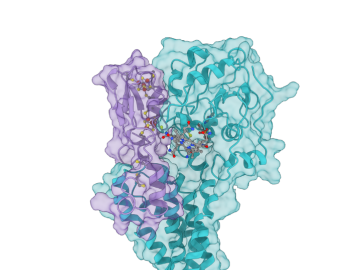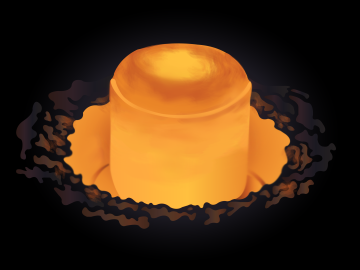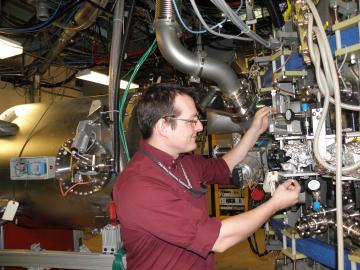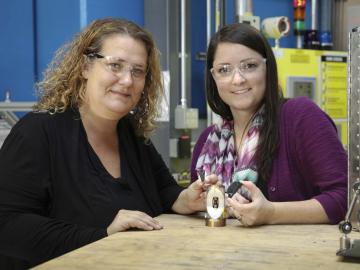
Filter News
Area of Research
- (-) Energy Science (59)
- (-) Nuclear Science and Technology (14)
- Advanced Manufacturing (3)
- Biology and Environment (45)
- Computational Biology (1)
- Computational Engineering (1)
- Computer Science (4)
- Electricity and Smart Grid (1)
- Fusion and Fission (25)
- Fusion Energy (8)
- Isotopes (23)
- Materials (78)
- Materials for Computing (14)
- National Security (34)
- Neutron Science (102)
- Quantum information Science (4)
- Supercomputing (111)
News Type
News Topics
- (-) Computer Science (18)
- (-) Cybersecurity (8)
- (-) Fusion (8)
- (-) Grid (22)
- (-) High-Performance Computing (4)
- (-) Isotopes (5)
- (-) Microscopy (6)
- (-) Neutron Science (11)
- (-) Polymers (6)
- 3-D Printing/Advanced Manufacturing (54)
- Advanced Reactors (10)
- Artificial Intelligence (6)
- Big Data (1)
- Bioenergy (24)
- Biology (9)
- Biomedical (6)
- Biotechnology (3)
- Buildings (19)
- Chemical Sciences (13)
- Clean Water (4)
- Composites (7)
- Coronavirus (10)
- Critical Materials (4)
- Energy Storage (46)
- Environment (31)
- Exascale Computing (2)
- Fossil Energy (2)
- Frontier (1)
- Hydropower (1)
- Machine Learning (4)
- Materials (22)
- Materials Science (18)
- Mathematics (1)
- Mercury (2)
- Microelectronics (1)
- Molten Salt (2)
- Nanotechnology (7)
- National Security (5)
- Nuclear Energy (28)
- Partnerships (12)
- Physics (3)
- Quantum Science (2)
- Security (6)
- Simulation (2)
- Space Exploration (4)
- Summit (4)
- Transportation (34)
Media Contacts

The inside of future nuclear fusion energy reactors will be among the harshest environments ever produced on Earth. What’s strong enough to protect the inside of a fusion reactor from plasma-produced heat fluxes akin to space shuttles reentering Earth’s atmosphere?

A team led by ORNL created a computational model of the proteins responsible for the transformation of mercury to toxic methylmercury, marking a step forward in understanding how the reaction occurs and how mercury cycles through the environment.

After its long journey to Mars beginning this summer, NASA’s Perseverance rover will be powered across the planet’s surface in part by plutonium produced at the Department of Energy’s Oak Ridge National Laboratory.

ORNL researchers have developed an intelligent power electronic inverter platform that can connect locally sited energy resources such as solar panels, energy storage and electric vehicles and smoothly interact with the utility power grid.

Lithium, the silvery metal that powers smart phones and helps treat bipolar disorders, could also play a significant role in the worldwide effort to harvest on Earth the safe, clean and virtually limitless fusion energy that powers the sun and stars.

Five researchers at the Department of Energy’s Oak Ridge National Laboratory have been named ORNL Corporate Fellows in recognition of significant career accomplishments and continued leadership in their scientific fields.

Scientists at ORNL used neutron scattering and supercomputing to better understand how an organic solvent and water work together to break down plant biomass, creating a pathway to significantly improve the production of renewable

Ada Sedova’s journey to Oak Ridge National Laboratory has taken her on the path from pre-med studies in college to an accelerated graduate career in mathematics and biophysics and now to the intersection of computational science and biology

Oak Ridge National Laboratory has licensed a novel method to 3D print components used in neutron instruments for scientific research to the ExOne Company, a leading maker of binder jet 3D printing technology.

Juergen Rapp, a distinguished R&D staff scientist in ORNL’s Fusion Energy Division in the Nuclear Science and Engineering Directorate, has been named a fellow of the American Nuclear Society


